
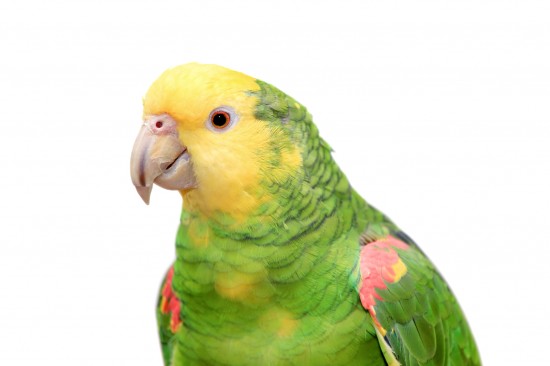
The Yellow headed Amazon (Amazona oratrix), also known as the Double Yellow-headed Amazon, is an endangered member of the amazon branch of the parrot family. It lives in Mexico and the northern parts of Central America in mangrove forests or forest near rivers.
These birds are usually 38-43cm in length with a sturdy build and short, square tail. The body is bright green, the head is yellow with dark markings on the neck, red at the wing-bends and yellow thighs. The flight feathers are black to blue-violet with red patches, as well as red on the tail with yellow outer tips. The eye ring is white in Mexican birds and more gray in birds from other areas.
In the wild, these amazons live in small groups or in pairs, occasionally in larger flocks. They have seen a 90% reduction in numbers in many of their areas due to capture for the pet industry and habitat loss. There is an introduced population living in Stuttgart in Germany where around 50 birds make their home, and smaller groups are found in areas of California.
The first thing to ensure is that the bird you are purchasing is correctly rung and has the right paperwork to prove it is captive bred, as wild caught birds are illegal to keep. Once you know you have a legal subject, these birds have a fantastic personality and are one of the best species for learning to ‘speak’. Perhaps only the African Grey can out-talk a Yellow headed Amazon!
These amazons are not known for nervous plucking of feathers which can be a problem with some parrots. However, like other amazon species, they can be affected by hormonal aggressiveness, particularly males during the breeding season. Due to this, they are generally recommended only for keepers who have plentiful experience with parrots.
Amazons are prone to weight gain, so plenty of exercises is vital to avoid this and for their long-term health in general. The perfect set up is where they can get 3-4 hours a day outside of their cage and will need toys to play with while out of their cage; otherwise household furnishing may suffer. Parrots are by nature curious, and use their beak to investigate their world so if they see it, they chew it to understand it. Always remember this when parrot-proofing a room.
The cage should be the very largest you can manage as a bird of this size will not cope well in a small cage. Also, the bars need to be very strong as the beak can be destructive and, like most parrots, they are good escape artists. Due to their sometimes aggression during breeding season, it is always wise to be able to provide fresh food and water without having to put your hand in the cage for these odd occasions.
Amazons like to bathe so a shower room perch can be a good idea or otherwise, misty at room temperature is another option.
If you are looking to keep your birds in an aviary, many breeders recommend a suspended style. This means you do not physical enter their territory for cleaning and maintenance purposes, and this can help to avoid accidents when the birds are in aggressive breeding mode, to both you and the birds. The other advantage of the suspended aviary style is that most of the fouled foods and faeces are going to fall through the mesh and not be trampled in by the birds. This can help to avoid parasites such as worms, though worming is still a good idea. A minimum recommended size for this type of construction is 4 metres by 1.2 metres by 1.2 metres high backed onto a safety porch with half the roof covered in wire and the remaining half solid to protect against weather. Strong gauge wire should be used. If you have more than one pair living near each other, it is recommended that a solid barrier be put between the pairs as they will spend more time trying to fight with the other birds than mating with their mate.
Around 40% of the bird’s diet should consist of fruit, vegetables or soaked pulses such as beans or peas. The remainder should be good quality seed and some pellets if available. The important part of the fresh food is to supply Vitamin A so carrot, pepper, broccoli or even cooked sweet potatoes are suitable for this. Seeds such as dandelion and sow thistle are also enjoyed as well as seeding dock in the summer and early autumn.
Fruits are also widely enjoying including grapes, pumpkin, apples and pomegranates. Nuts can be given such as pecans and almonds but not in too large an amount as all nuts have fat in them. Sometimes nuts will be given via a puzzle toy which gives the bird a work-out of sorts before they get the treat.
Of the amazon species, the Yellow headed is said to be the easiest to breed in captivity. Depending on where they are, the breeding season can be February and March to June and July. 3-4 eggs are laid in a nesting box usually around 12 x 12 x 24inches. They eggs are incubated for 24-26 days and chicks fledge at around 10-12 weeks of age. They can be hand-reared if this is required and special hand-rearing formulas for macaws is a good food for this.
Described as wonderful characters, intelligent and charming, these are big birds with big characters. However, like their fellow Amazons, these are not birds for the faint hearted as their breeding temperament can be ferocious. Know what you are getting yourself involved with if you are considering buying one or more of these birds, for your own sake and that of the birds.
Saying that, if you have experience with the parrot family and are looking for a new challenge, these birds can breed successfully in captivity. They also bond strongly with their human for great companionship.
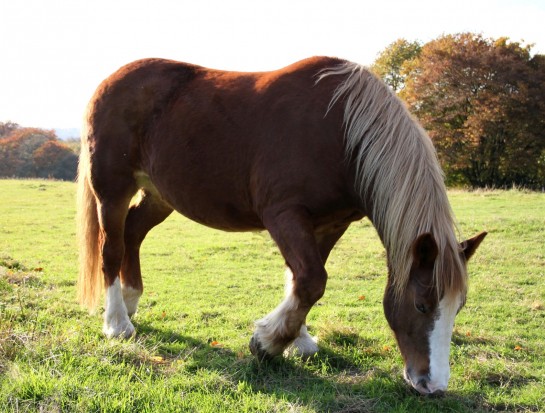 Why Do Horses Rest A Back Leg?
Why Do Horses Res
Why Do Horses Rest A Back Leg?
Why Do Horses Res
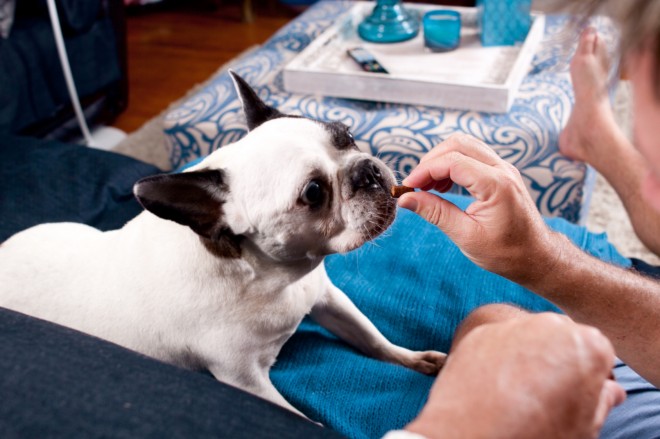 How To Stop Your Dog From Snapping For Treats
How To Stop Your
How To Stop Your Dog From Snapping For Treats
How To Stop Your
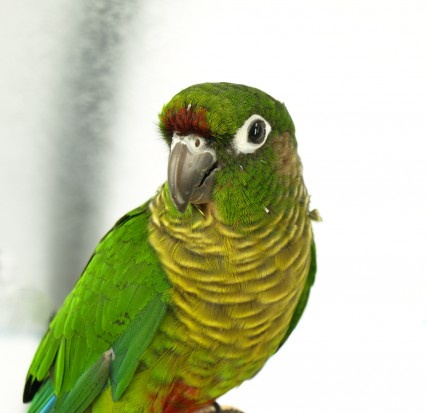 The Green Cheeked Conure
The Green Cheeked
The Green Cheeked Conure
The Green Cheeked
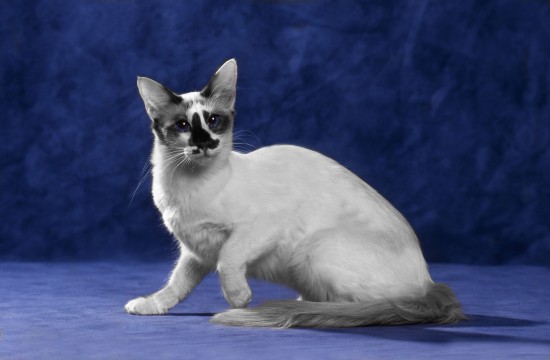 The Differences Between A Balinese And A Siamese Cat
The Differences B
The Differences Between A Balinese And A Siamese Cat
The Differences B
 Why You Need Leather Dog Collars Accessories?
Why You Need Leather Dog Collars Accessories?
Why You Need Leather Dog Collars Accessories?
Why You Need Leather Dog Collars Accessories?
Copyright © 2005-2016 Pet Information All Rights Reserved
Contact us: www162date@outlook.com